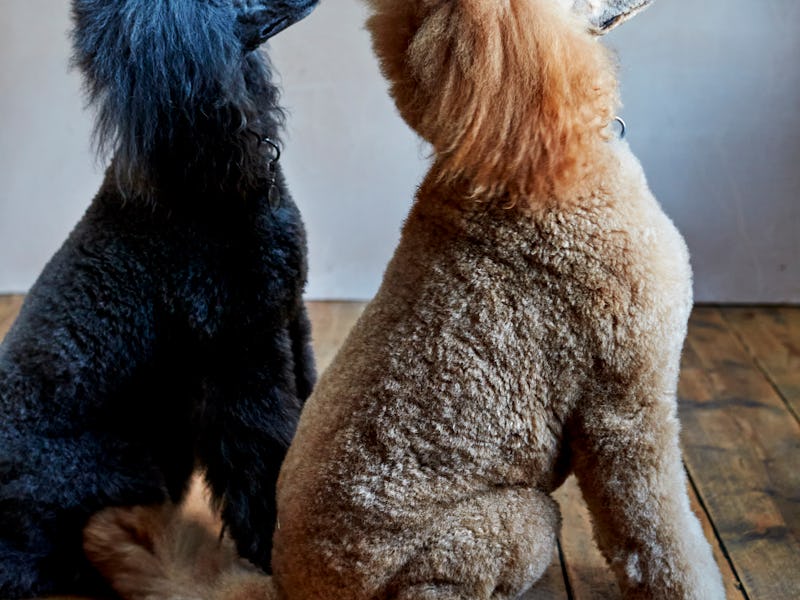You Should Be Gentle Parenting Your Pet, An Animal Behavior Expert Reveals
It turns out that gentle parenting might actually be the most effective way to redirect a dog’s undesirable behavior.

Gentle parenting has cropped up as a popular term in recent years for an empathetic, process-based approach to parenting. Rather than focusing on conditioning kids with treats or punishments, gentle parenting encourages parents to help their child understand their feelings, coming to conclusions on their own rather than being told what to do.
How much does this philosophy translate to pets? It turns out that gentle parenting might actually be the most effective way to redirect a dog’s undesirable behavior, too.
The first step is understanding your dog’s personality and motivations, and working accordingly. “We have to create a plan that is individualized, and understanding of the individual that we are working with,” says Carlos Siracusa, a veterinarian and animal behavior expert at the University of Pennsylvania School of Veterinary Medicine.
For example, if your dog’s poor behavior is barking indoors, it would behoove the owner to first see what’s triggering the behavior. Is it a specific individual? Is it simply being around other people? Is your dog upset, or scared, or excited? All these motivations determine how to proceed in different ways.
In the world of learning theory, according to Siracusa, there are four types of actions: positive and negative reinforcement, and positive and negative punishment. Positive and negative don’t refer to whether the intervention is good or bad, but rather whether the intervention adds (positive) or takes something away (negative) from the environment. Reinforcement is about encouraging a behavior while punishment is about discouraging it.
So positive reinforcement would be giving the dog something pleasant in exchange for a behavior while negative reinforcement would be removing something unpleasant in exchange for a behavior. Positive punishment, on the other hand, means introducing something unpleasant in exchange for a behavior. Negative punishment would be removing food before your dog is sitting nicely; this way your dog learns that it needs to sit before it’s allowed to eat.
Rubbing your dog’s nose in its poop is an example of positive punishment. “The problem with using positive punishment is that we're not 100 percent sure what the dog is learning,” says Justine Schuurmans, a certified professional dog trainer based in New Jersey and founder of The Family Dog.
Siracusa also says the problem with rubbing your dog’s nose in its waste is that it’s not a “continuous” action. Your window of opportunity to create an association between an action and consequence is very small. If you’re coming home and rubbing your dog’s nose in its poop minutes or hours later, the dog will have no idea why you’re doing that.
Some pet parents might retort by saying dogs know when they’ve done bad. They act guilty and make themselves small. Siracusa has an explanation for this as well. “What the dog is doing is trying to appease you, because he doesn't understand why you are mad,” he says. Dogs, ever attuned to body language, will learn what we look like when we’re upset. If we then introduce positive punishment, all the dog learns is a connection between our mood with our behavior.
Schuurmans urges us to think of dogs as children we’re parenting rather than animals we’re training. “If you just trade out the word ‘dog’ and put in ‘two-year-old child,’ you can answer so many of your own questions.”
“In this case, it’s not working as a positive punishment of the pee or the poop, it's working more as a negative stimulus that you add, which will then cause the dog to usually assume a defensive posture,” Siracusa says.
In other words, they won’t necessarily realize they’ve done anything wrong. All they’ve learned is to cower and shrink when they sense we’re upset about anything. “We're becoming a very untrustworthy source,” Schuurmans says.
Schuurmans gives another example of a shock collar for families who want to train their dog to roam free in the yard. An excitable dog might see a person or another dog beyond the limits of the yard. It will run toward them before feeling the shock. But it won’t necessarily make the connection that it’s meant to stay inside the yard. It might instead learn that running toward other people or dogs will cause that shock.
What she suggests is tailoring the dog’s environment. If your dog has a history of pooping on the floor, take it for a long walk before you leave and then leave it in its crate; if the area is small enough, it won’t poop. As for a shock collar, she recommends simply getting a physical fence. Schuurmans even urges us to think of dogs as children we’re parenting rather than animals we’re training.
“If you just trade out the word ‘dog’ and put in ‘two-year-old child,’ you can answer so many of your own questions,” she says.